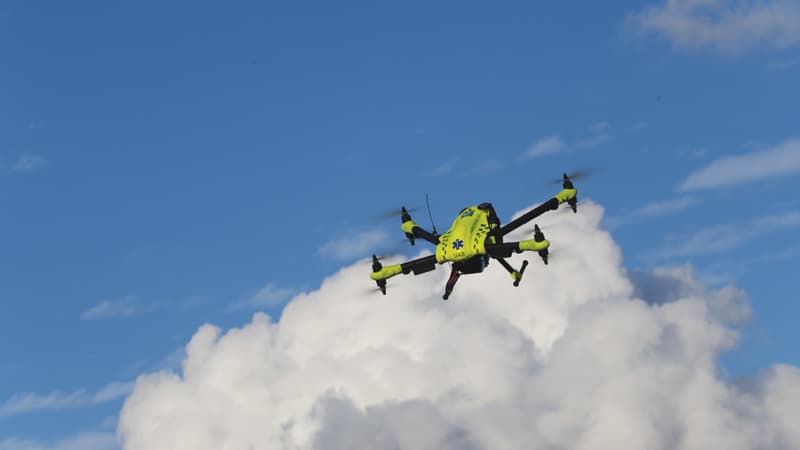Unexpected Benefits of Drones: Saving Lives and Providing Therapy
The new eyes in the skies

I have been fortunate to work in a wide range of industries. I have served on the battlefields of Iraq and Afghanistan as an officer in the Marine Corps, toiled in the boardrooms of corporate America and had a brief but enjoyable time as a marine mammal trainer working with seals and dolphins at the National Aquarium in Baltimore. Few jobs, however, have given me as much peace as my current work as an FAA-licensed commercial drone pilot.
When I fly my drones, I am often approached by curious onlookers. Most people cautiously ask about the drone’s capabilities or if it takes a lot of training to operate. Inevitably, I am asked whether I use the drone to spy on people. This question in particular has formed my opinion that many people are unaware of the numerous beneficial applications for drones.
The closest many people have been to a drone is hearing a somewhat annoying buzz overhead. The media tells occasional stories that villainize drones: the invasion of privacy by Peeping Tom drones or reckless drone pilots coming too close to manned aircraft. In reality, drones have the power to make a very positive impact on our world and our lives. In many cases, drones are already saving people and bridging gaps.
BIRD’S EYE VIEWS
Many drones are essentially flying cameras. The quality of the camera drones currently on the market range from poor to amazing, with prices varying by quality.
The camera drones that fit in the palm of your hand and cost less than $100 typically produce grainy images and are difficult to fly. Those used by the movie industry can easily start in the tens of thousands of dollars and even break the hundred-thousand-dollar mark.
I have found drones by DJI to provide the best bang for the buck. This Chinese company claims an estimated 70 percent of the consumer drone market share and produces camera drones that range from about $400 (the DJI Spark) to my personal favorite, the DJI Phantom 4, starting at $1,200.
I have found both drones to be enjoyable for all ages, easy to control and producing fantastic photographs and videos.
LIFESAVING BENEFITS

Beyond the joy of taking photos, drones are helping to save lives around the world. One pioneering company, Zipline, has developed drones that deliver medical supplies to remote corners of the world.
For example, since October 2016, Zipline has been providing blood products to 21 transfusing facilities in remote parts of Rwanda. It once took hospitals in Rwanda many hours to pick up blood at regional distribution centers, but now the same task via drones takes less than 30 minutes. Ultimately, Rwanda plans to have all 12 million of their citizens within 30 minutes of lifesaving medical products through Zipline.
Even in more developed countries, such as Sweden, drones are proving to have enormous potential in emergency medicine. A recent study by the Centre for Resuscitation Science at the Karolinska Institute in Stockholm, investigated the responsiveness of drones carrying defibrillators compared with ambulances’ response time.
The director of the study, Jacob Hollenberg, noted the importance of rapid response after a heart attack for a victim’s chances of survivability. “Every minute that passes from collapse to [cardiopulmonary resuscitation] or defibrillation, the chance of survival goes down by 10 percent. That’s why survival after 10 to 12 minutes is basically zero. There’s a huge difference in using the defibrillator within the first few minutes. Even if you improve the timing of the ambulances in these types of situations, it’s too late – only one in 10 victims survive.”
The study, published in the Journal of the American Medical Association, found that drones carrying defibrillators arrived on the scene an average of 16 minutes faster than other emergency services. That amount of time could easily mean the difference between life and death.
DRONE THERAPY
Drones have also been proven to have a therapeutic aspect. Those with disabilities or mobility challenges have found relief in flying drones. The First-Person View (FPV) on the live feed of a drone’s camera can be liberating. Looking at images on a control screen or through goggles can make a person feel as if he or she is flying.
A service called Flight to Remember Aerial Anthropology in Ohio works with hospice patients and their families to identify locations where patients have made some of their most meaningful memories. Aerial Anthropology uses drones to capture footage of these locations, guided by the patient’s requests. The end result is a custom video, a wonderful and freeing experience for the patient and the family.
A PERSONAL LIFESAVER
After my many tours of war I developed a high level of Post-Traumatic Stress Disorder (PTSD). I have tried many different treatments with varying success. When I began flying drones, I discovered relief from some of my symptoms. I believe the feeling that you are flying gives a break from the memories and darkness that PTSD engraves on the mind. In speaking with other veterans, I found they, too, felt relief from their symptoms while flying drones.
This inspired me to bring drones to other veterans with PTSD. Recently, I started a nonprofit, Vigilante Cares, arranging events where veterans suffering from PTSD can meet in a safe location and fly drones. We use goggles that allow veterans to see what the drone sees as it flies. This is especially helpful for veterans with injuries that prevent them from controlling the drone themselves. I’m confident we will help veterans make amazing strides towards PTSD recovery.
Drones have been around in their current state for only a few years, and their beneficial uses continue to grow. Researchers are investigating the use of drones to pollinate trees, detect land mines, deliver packages, inspect aircraft for damages and help conserve our natural resources. Drones will continue to become more and more an everyday part of our lives.
The next time you hear that buzz from above, remember the good that drones are already doing in our world. Even better, get your own and take off into the skies.
David Daly is a commercial drone pilot/writer/photographer. He is the owner of Vigilante Drones aerial photography company (VigilanteDrones.com). As a former major in the Marine Corps and veteran of numerous tours of duty in Iraq and Afghanistan, he finds relief from his own high level of PTSD through drones and has started a drone-based nonprofit that helps other veterans with PTSD, Vigilante Cares.


